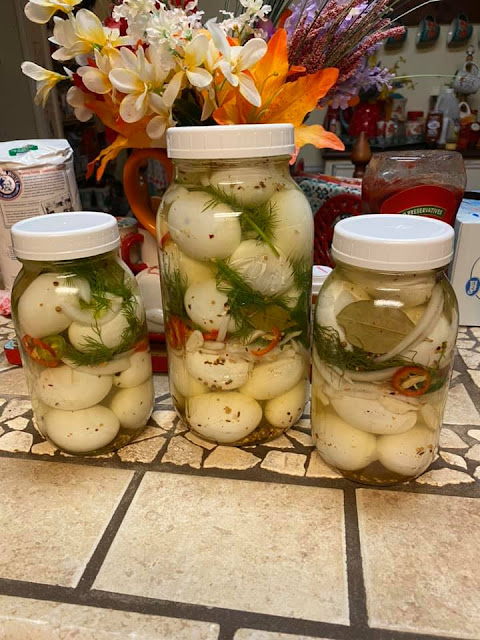The Irresistible Art of Homemade Bread: A Beginner's Guide to Baking Warm and Delicious Loaves
Are you ready to embark on a delightful culinary adventure in your very own kitchen?
There's something truly special about the aroma of freshly baked bread that fills the air and warms the heart. Whether you're a novice or an experienced baker, this beginner's guide to homemade bread will equip you with the knowledge and confidence to create irresistibly delicious loaves that will impress your family and friends. So roll up your sleeves, dust off your apron, and let's dive into the art of baking homemade bread!
Why Homemade Bread?
Before we delve into the nitty-gritty of baking bread, let's take a moment to appreciate why homemade bread is worth the effort. There's a certain magic in creating something from scratch, and bread is no exception. When you bake your own bread, you have complete control over the ingredients, ensuring that you're using high-quality and wholesome components. Additionally, homemade bread allows you to experiment with flavors, textures, and shapes, making each loaf a unique masterpiece. And let's not forget the satisfaction and pride that come from sharing a freshly baked loaf with your loved ones. So let's get started on this delicious adventure!
The Best Homemade Bread Recipe
- Now, let's unveil the star of the show - the best homemade bread recipe. This recipe, courtesy of Tastes Better from Scratch, is a true gem that promises simplicity and incredible flavor. With just six pantry staples, you can create a classic white bread that is perfect for sandwiches and freezes well too.
Ingredients needed:
- - Warm water: (105-115 degrees) - to activate the yeast.
- - Active Dry yeast: Instant or rapid rise yeast can be substituted.
- - Granulated sugar or honey: The sugar feeds the yeast and tenderizes the bread.
- - Salt: Enhances flavor.
- - Oil: Vegetable or canola oil, or melted butter can be substituted.
- - Flour: Bread Flour or All-Purpose Flour can both be used.
Pro Tips:
- - Use fresh yeast! Expired or bad yeast will not yield proper results.
- - To speed up the bread rise time, preheat the oven to 180 degrees F, then turn it off. Place the bowl of dough in the slightly cracked-open oven to rise.
How to Make Bread:
- 1. Proof the yeast: In a large bowl, add the yeast, water, and a pinch of sugar or honey. Allow it to rest until foamy and bubbly.
- 2. Prepare the dough: Add the remaining sugar or honey, salt, oil, and 3 cups of flour. Mix to combine. Gradually add more flour until the dough pulls away from the sides of the bowl.
- 3. Knead the dough: Mix or knead the dough until smooth and elastic, slightly sticky to the touch.
- 4. First rise: Place the dough in a greased bowl, cover, and let it rise until doubled in size (about 1 ½ hours).
- 5. Punch the dough down, divide it into two portions, and shape them into loaves.
- 6. Second rise: Place the loaves in greased loaf pans, cover them with sprayed plastic wrap, and let them rise until they reach 1 inch above the pans.
- 7. Bake: Preheat the oven to 350 F, then bake the bread for about 30-33 minutes until golden brown.
- 8. Cool and enjoy: Invert the baked loaves onto a wire rack, brush the tops with butter, and allow them to cool before slicing.
Storing and Freezing Instructions:
- - Once cooled, store the bread in an airtight container or bag at room temperature for 2-3 days or in the refrigerator for up to 5 days.
- - To make ahead, refrigerate the dough after the first rise and proceed with the remaining steps when ready.
- - To freeze the dough, shape the loaves and tightly wrap them in aluminum foil. Thaw and complete the second rise before baking.
- - To freeze baked bread, cool it completely, place it in freezer-safe bags, and thaw as needed.
Frequently Asked Questions (FAQs)
1. Do I need a Bread Maker or Stand Mixer?
Not at all! While a stand mixer can make the process easier, you can achieve excellent results using a mixing bowl, wooden spoon, and your hands for kneading. A bread machine can also be used, but you may need to adjust the recipe accordingly.
2. How can I ensure my bread rises properly?
Using fresh yeast is crucial for a successful rise. Make sure to proof the yeast before proceeding with the recipe. Additionally, providing the dough with a warm and draft-free environment during the rising process will help it double in size.
3. Can I customize the bread recipe?
Absolutely! Once you've mastered the basic recipe, feel free to experiment with different variations. You can add flavors like cinnamon swirl orraisins, incorporate herbs and spices, or even try different types of flour for a unique twist.
Baking homemade bread is a rewarding and fulfilling experience.
With the right recipe and a little bit of practice, you can create warm and delicious loaves that will delight your senses and bring joy to those around you. So gather your ingredients, unleash your creativity, and let the aroma of freshly baked bread fill your home. Happy baking!
Homemade Bread, Beginner's Guide, Baking, Delicious Loaves, Recipe



















Comments